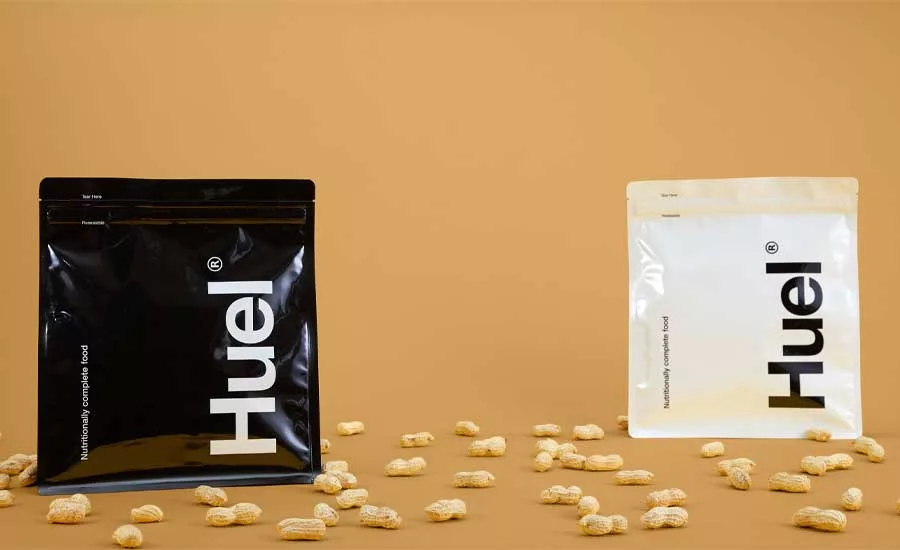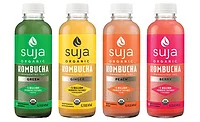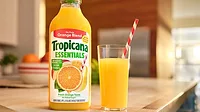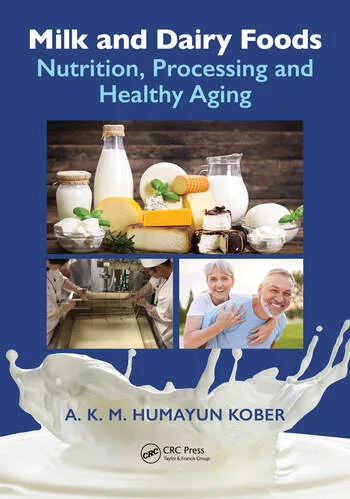Special Report: Health & Wellness
Healthy, functional drinks dominate market
Immunity products with healthy attributes on the rise

Even before COVID-19 hit the United States last year, consumers already were taking a more holistic approach to health and wellness, scanning store shelves and searching online for clean labels and functional beverages, powders and supplements to help them be as “fit as a fiddle.” As a result, beverage companies are striving to be “as right as rain” to give consumers the innovative new products they’re thirsting for.
Over the past 11 months, the pandemic has changed the way consumers shop, socialize, entertain as well as the types of foods and beverages they consume. Although vaccines have been developed and are in distribution, the pandemic is affecting beverage trends and overall health and wellness, expert note.
Nick Viriyasiri, a flavor scientist at Beck Flavors in Maryland Heights, Mo., suggests that the beverage industry has benefited a lot from the pandemic — both in the health and wellness sector and in the innovative/indulgent side of market. “Even though we are not able to go out and experience beverage innovation in a public setting, consumers are still willing (if not more willing) to try new products in the form of [ready-to-drink] (RTD) beverages found at the supermarket,” he says.
As the stress from social distancing, staying at home and homeschooling takes its toll, consumers are on a quest to stay healthy, boost immunity and improve their quality of life, says Philip Caputo, marketing and consumer insights manager at Virginia Dare.
“Enjoying one’s favorite flavors in healthy applications can be a nice pick-me-up, a permissible indulgence,” Caputo says. “While there may be challenges in formulating indulgent foods, flavor modulation can help overcome undesirable flavors or textures.”
As a result of the pandemic, the Brooklyn, N.Y.-based flavor company is seeing piqued interest in health and wellness-inspired flavors and ingredients associated with health and well-being. “Dark berries such as açaì, elderberry and goji are known as rich sources of antioxidants, while ginger and mushrooms are known for anti-inflammatory properties,” Caputo explains. “By integrating wellness flavors into their applications, beverage brands can underscore their focus on targeted nutrition categories such as immunity, brain health, aging, and digestion.”
Meanwhile, 56 percent of global consumers in Brazil, China, France, Germany, India, Indonesia, Italy, Mexico, Netherlands, Spain, the United Kingdom and the United States continue to be “very concerned” about their personal health and the health of family and friends, says Lu Ann Williams, global insights director at Innova Market Insights, The Netherlands.
Healthy aspects now are “a lot more important” to 30 percent of consumers and “a little more important” to 23 percent, she adds.
Holly McHugh, marketing associate at Niles, Ill.-based Imbibe, notes that consumers are pushing to stay active in order to improve overall well-being and to combat weight gained during quarantine, also referred to as the “quarantine 15.”
“This creates opportunity for brands launching sports nutrition and weight loss products because the audience of active consumers is continuing to expand,” she explains. “I also expect there to be greater demand for products that boost mood and improve sleep because the pandemic has had such an impact on the mental health of many consumers.
“There are several ways brands can deliver these benefits — from more fringe options like adaptogenic beverages to using more mainstream ingredients like chamomile and lavender that promote relaxation,” McHugh continues. “… Launching beverages that are rich in macro and micronutrients isn’t a new trend, but I expect that consumers will be paying even closer attention to the nutritional value that products provide and that the audience looking for claims about nutrients like protein, fiber and omega-3s will expand.”
Available in powder form in the newest flavors of Salted Caramel, Caffè Latte, Banana and Peanut Butter, Huel offers consumers a 400-calorie, nutritionally complete “meal in a glass” that provides 27 essential vitamins and minerals, the company says. Derived from sustainable ingredients such as pea protein, flaxseed, brown rice protein, sunflower and coconut, the powders provide a balance of protein, carbohydrates, fiber and omega-3 and -6 fats, the company says.
Healthy hydration
When it comes to healthy hydration, bottled water, flavored still and sparkling waters and enhanced waters are in high demand because they provide healthy hydration on the go.
“Beverages have often been given a bad rap as a source of ‘empty calories,’ but there has been lots of innovation recently in exciting additions to water,” says Hannah Polk, associate data product manager and registered dietitian at Chicago-based SPINS. “Flavored sparkling water has seen an increase of 29.8 percent within SPINS’ Natural Enhanced Channel over the past year.”
Consumers have a plethora of functional water options from which to choose.
Founded in 2020 by Leon Codner, Liquid Plant-Based Hydration, Tampa Bay, Fla., is formulated with 5 percent non-GMO watermelon juice, 50 mg of plant-based branch chain amino acids, natural sweeteners, natural flavors and six essential vitamins, the company says.
The ready-to-drink Liquid Hydration contains no added sugar, is vegan and is “an awesome alternative for health-conscious consumers or fitness enthusiast because it offers delicious plant-based hydration to help you stay hydrated throughout the day,” Codner says. Liquid Hydration is available in four flavors: Orange Mango, Black Cherry Pomegranate, Strawberry Banana and Peach.
Demand for probiotics to boost immune health also is soaring. According to the Nutrition Business Journal, year-over-year U.S market sales in immune health have grown over 25 percent to more than $4 billion in 2020, and 10 percent of those numbers are from probiotic sales.
Caleb Bryant, associate director of food and drink at Chicago-based Mintel, notes that interest in immune health will remain a top trend even as the pandemic fades.
“Consumers are taking a preventative approach to their overall health, now more than ever,” he says. “In fact, 31 percent of consumers are consuming foods and beverages with immune support claims.”
Abbott Park, Ill.-based Abbott, makers of pediatrician-recommended Pedialyte for children that’s been on the market for nearly 50 years, recently launched a rehydration product for adults: Pedialyte with Immune Support.
Available in powder packs in Fruit Punch and Mixed Berry, Pedialyte with Immune Support contains zinc to build new immune cells; vitamin C to promote cell health; vitamin B12 to help activate immune cells; and vitamin E to support cell membranes, the company says. It also contains PreActiv prebiotics to promote digestive health and immune support and 33 percent more electrolytes.
Clean and clear
In addition to products that promote immunity and digestive health, there’s also been a rise in clean-label, organic shelf-stable functional beverages like RTD coffees and teas, Innova Market Insights’ Williams says.
“Globally, a rise was observed in 2017 where we saw a peak in new product developments of shelf-stable functional RTD beverages followed by a slight decrease until 2019; and in 2020 a regain in activity,” she says. “In 2020, shelf-stable RTD beverages with an organic claim represented 13 percent of total shelf-stable functional RTD beverages globally.
“At the same time if we look for beverages in general (no specific shelfing and functional aspects) with a clean-label positioning — organic, non-GMO, natural, no additives/preservatives — it’s stabilizing around 30 percent of overall global beverage launches over the last 5 years,” Williams continues. “While no additives/preservatives remains the largest claim, in recent year organic and non-GMO are the ones driving the clean-label platform among beverages.”
Older consumers are looking for products that will help them age in place, with functionality the key trend for the beverage industry, Mintel’s Bryant says. He advises beverage-makers to keep in mind that 39 percent of consumers currently consume foods and/or beverage with heart health claims; 18 percent seek products to help control diabetes; and 51 percent consume products with no sugar claims.
Sugar swap
Brands striving to remain competitive should continue the pattern of developing low- and no-sugar products, reducing calories, incorporating natural ingredients or adding functional ingredients into more indulgent products to give consumers great taste and more functionality, experts note.
Curtailing the amount of sugar that contributes to chronic health issues like diabetes, obesity and heart disease and reducing fats and carbohydrates also is key to managing disease, SPINS’ Polk says.
“The reality of chronic disease is that it can put you at risk for several other health risks or comorbidities. … We have seen a correlation with chronic health issues like obesity and the impacts of COVID-19,” she explains. “A low-sugar diet can help you stay healthy … and we’ve seen a trend of beverages incorporating innovative sugar alternatives.
“Diabetes is one of several adverse health conditions associated with overconsuming added sugar,” Polk continues. “Diabetics often try to avoid these spikes in blood sugar by consuming a fixed amount of carbohydrates and limiting their sugars intake. Because of this, diabetics often turn to low-carb, low-calorie, and low glycemic index sweeteners like stevia, monk fruit, sugar alcohols and artificial sweeteners.”
Polk notes that usage of natural sweeteners such as monk fruit, stevia and other sugar alcohols are up 41 percent over the past year, with monk fruit, perhaps one of the lesser-known sugar alternatives, up 17 percent. She also has noticed a 13 percent increase in consumers drinking unsweetened beverages.
Imbibe’s McHugh says that the rise in better-for-you products for health-conscious consumers is unlikely to dissipate. However, she suggests a greater need for differentiation due to a saturated beverage market.
“The health and wellness trend has resulted in a lot of brands branching out from traditional categories like CSDs, juice and dairy and offering new-to-the-world products,” she explains. “… The further you branch out from those traditional categories and incorporate novel ingredients and delivery methods, the more technically complex developing these products becomes.”
Looking for a reprint of this article?
From high-res PDFs to custom plaques, order your copy today!






